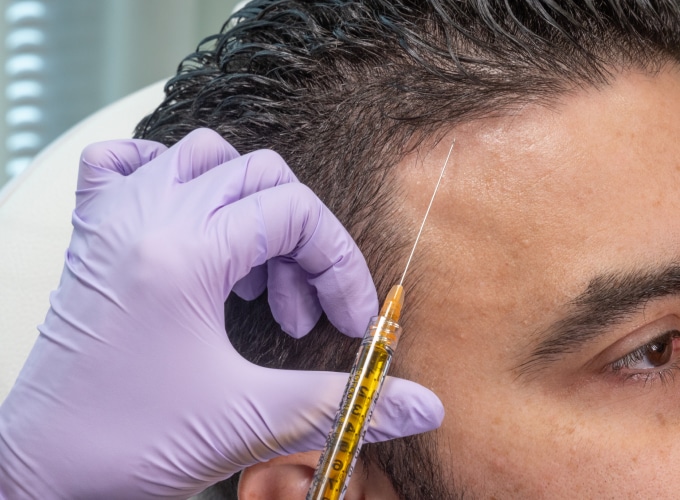Does PRP Regrow Hair on Receding Hairline?
Hair loss can be a frustrating experience, particularly for individuals with a receding hairline. As more people seek effective treatments for this issue, Platelet-Rich Plasma (PRP) therapy has emerged as a popular solution. But the question remains: Does PRP regrow hair on a receding hairline? In this article, we explore how PRP works for hair restoration, its effectiveness for a receding hairline, and what you can expect from this treatment. Additionally, we will touch on the related question: How Much Does PRP Treatment Cost in Dubai? Let's dive in.
What is PRP Treatment?
PRP therapy involves using your body's own blood to stimulate hair growth. The treatment works by drawing a small amount of your blood, which is then processed to separate the platelet-rich plasma. This plasma, rich in growth factors, is injected into the scalp at areas where hair loss is occurring. The goal is to promote hair regeneration and improve hair density, particularly in areas where hair has thinned or receded. While PRP treatment can benefit individuals with various types of hair loss, its effectiveness is most notable in cases of androgenic alopecia, also known as male or female pattern baldness. Many individuals with receding hairlines have turned to PRP as a potential solution to restore lost hair and halt further hairline regression.
How Does PRP Work for a Receding Hairline?
A receding hairline occurs when the hairline gradually moves back, usually starting at the temples or forehead. This condition is most common among men but can also affect women. PRP therapy targets the hair follicles in the receding areas by injecting the platelet-rich plasma directly into the scalp. The growth factors in PRP stimulate the hair follicles, increasing blood circulation and encouraging hair regrowth. This helps revitalize dormant or miniaturized follicles and promotes the thickening of existing hairs. In some cases, patients may experience noticeable improvements in hair density, with thicker, stronger hair growth along the receding hairline.

The PRP Treatment Process
The PRP treatment process typically involves a few simple steps:
- Blood Collection: A small amount of blood is drawn from your arm.
- Processing the Blood: The blood is placed in a centrifuge to separate the platelet-rich plasma from other components.
- Scalp Injection: The plasma is injected into the scalp in areas where hair loss or thinning is most prominent.
The entire process usually takes around 30 to 60 minutes, and most patients can resume their normal activities immediately after the procedure. Since PRP is a non-surgical treatment, there is minimal downtime involved.
How Much Does PRP Treatment Cost?
If you are considering PRP therapy, one of the most frequently asked questions is, How much does PRP treatment cost? The price of PRP treatments in Dubai can vary depending on factors such as the clinic, the extent of hair loss, and the number of sessions required. It is important to consult with a professional to understand the exact costs and determine if PRP therapy is a suitable option for your hair restoration goals.
What Are the Benefits of PRP for a Receding Hairline?
PRP therapy offers several benefits, especially for those dealing with a receding hairline:
Non-Surgical Treatment: PRP is a minimally invasive procedure, making it an appealing option for individuals who wish to avoid surgery.
Uses Natural Growth Factors: Since PRP uses your own blood, the risk of adverse reactions is minimal, making it a safe treatment.
Promotes Hair Regrowth: By stimulating hair follicles, PRP can encourage the growth of thicker, stronger hair in areas affected by thinning.
Minimal Downtime: Most patients can resume normal activities right after the procedure with little to no downtime.
Improved Hair Quality: In addition to regrowing hair, PRP can also improve the quality of existing hair, making it appear fuller and healthier.
Conclusion
PRP therapy has become a popular non-surgical treatment for individuals with a receding hairline, offering the potential to restore hair growth and improve hair density. While PRP can be highly effective for some individuals, it may not be the right solution for everyone. Success depends on factors like the severity of hair loss and the individual's response to the treatment. If you are considering PRP for your receding hairline, it's important to consult with a specialist to determine if it's the right choice for you. As a minimally invasive procedure, PRP offers many benefits, including improved hair quality, natural regrowth, and minimal downtime. Ultimately, it may be the solution you've been looking for to restore confidence in your appearance.
